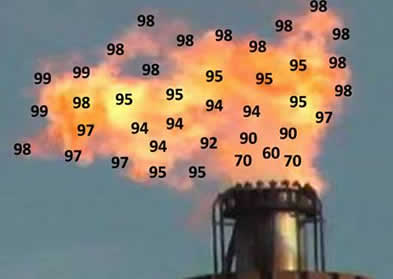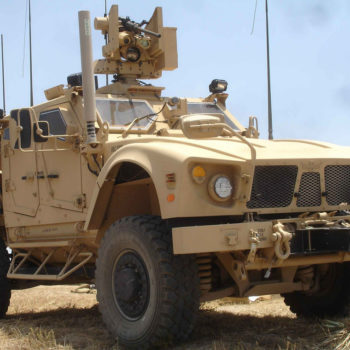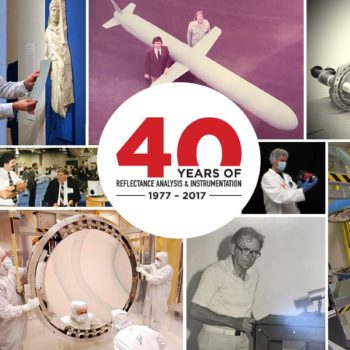Spectral Imaging for Industrial Flare Monitoring
- On November 3, 2016
Direct measurement of flare combustion efficiency has been a long-standing technological challenge. Our multispectral infrared imager delivers real-time continuous flare monitoring and optimization potential.
Real-time flare monitoring means real environmental impact
Industrial flares are widely used as safety devices in petroleum refineries, chemical plants and oil and gas fields. Waste process gases are vented to flares to be safely combusted over the flare tips, avoiding industrial accidents and reducing air pollution. But recent studies have found flares are producing significantly more emissions than previously estimated and has prompted the Environmental Protection Agency (EPA) to implement stricter compliance standards aimed at reducing smoking flare emissions. The new EPA provisions require refineries to have a minimum of three pollution prevention measures installed, analyze the causes and remedies of release events, and implement continuous monitoring of flares and pressure release devices.
The EPA estimates that improved flare monitoring and other revised compliance standards will eliminate 5,600 tons per year of toxic air pollutants, and 52,000 tons per year of volatile organic compounds (VOC) when they take effect in 2019. Reducing toxic emissions from refineries will result in improved air quality and a significant reduction of risk to public health in communities surrounding these facilities.
Real-time infrared spectral imaging has significant advantages over conventional combustion efficiency analysis methods
The EPA requires flare combustion efficiency (CE) to be a minimum 98% destruction and removal of hydrocarbons vented to flares. Refineries can optimize flare combustion efficiency by changing operating parameters such as steam to vent gas ratio, adding supplemental fuel, or changing the fuel to air ratio. However, the ability of flare operators to achieve a high flare CE is severely limited by the lack of live flare efficiency data to respond to. Industrial flares operate in open air, making it difficult for conventional instruments to directly monitor post-combustion gases. Current combustion monitoring methods include the extractive method (directly sampling post-combustion flare gases), open path Fourier Transform Infrared spectroscopy (FTIR), and the use of surrogate parameters (e.g. heating value, exit velocity) to indirectly predict CE. These methods are either impractical or inadequate in meeting the EPA’s new standards for continuous monitoring.
Surface Optics Corporation’s innovative multispectral infrared imager is at the core of a new solution for continuous automated flare efficiency monitoring. Infrared spectral imaging can directly measure relative concentrations of unburned hydrocarbons, product of combustion and product of incomplete combustion represented by carbon monoxide.
Advanced 24/7 flare monitoring and automated analysis
Surface Optics Corporation has partnered with Providence Photonics, LLC and Zeeco, Inc. to deliver a solution for flare monitoring as new EPA rules are expected to affect 142 “major source” facilities. This multispectral imaging instrument eliminates the need for indirect methods of estimating combustion, while it continuously measures combustion efficiency (CE), monitors visible emissions, and reports a flare’s smoke level to optimize flare operation.






0 Comments